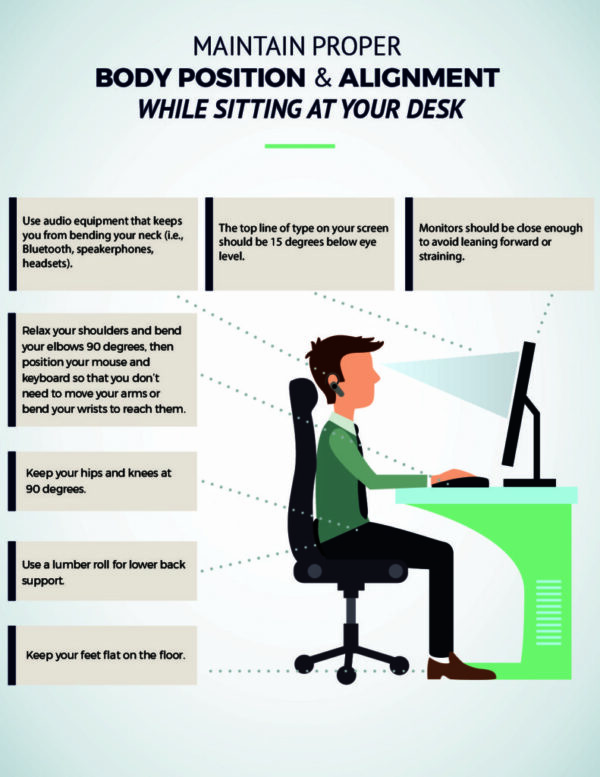Pain-Proof Your Workstation
Your office may be the place where good ideas come to fruition and productivity soars, but it can also be a place that triggers back pain, neck strain, and carpal tunnel. Imagine the amount of strain that is placed on your body while simultaneously sitting in a chair, hunching over a keyboard, and balancing a phone between your shoulder and ear. And full-time workers do that for over 2,000 hours each year! Consider these tips to help pain-proof your office or workstation.
Choose the right chair
Finding the right chair is as important as finding a good quality mattress. Remember – 2,000 hours a year… that’s a lot of sitting. Make sure you’re comfortable. You don’t want anything that lacks support for your lower back and make sure you can adjust the seat height. Your feet should always rest flat on the floor so your knees are level with your hips.
You could always skip the quest to find the perfect chair and opt for a standing desk instead; which has been shown to combat many of the scary consequences associated with prolonged sitting.
Think ergonomically when setting up your workstation
Computer monitors should be visible without having to lean in or strain. The top line of type should be at or 15 degrees below eye level. This helps you maintain proper posture and prevent neck strain from looking down. Also, use audio equipment that keeps you from bending your neck (i.e., Bluetooth, speakerphones, headsets).
Keep carpal tunnel symptoms at bay by making sure your wrists are not forced to bend to use the keyboard. Your forearms and wrists should not be leaning on a hard edge.
Take breaks to avoid pain
Taking a 10-second break every 20 minutes will be very beneficial. Standing, walking, or moving your head in a “plus sign” fashion are a few ideas. And don’t be afraid to stretch. One exercise we often recommend is called the “Bruegger Relief Stretch”. Click here to learn how it’s done.
Preventative care is the best solution for workstation injuries. Small adjustments to your workstation and posture will make a noticeable difference in how your body feels at the end of a long workweek.
Take action to make a difference
If you are experiencing pain that is causing you pain while you work or even worse causing you to miss work all together it is always a good idea to get the advice of a trained professional. Many workplaces have ergonomic departments and are getting better at providing proper workstations. But don’t automatically assume that what works for the other 80% of your co-workers can work for you. Sometimes the advice of a trained professional like a chiropractor or physical therapist can be invaluable. If you don’t know where to start you can contact our office here and we can direct you.
Check out the following infographic to learn about workstation set-up



